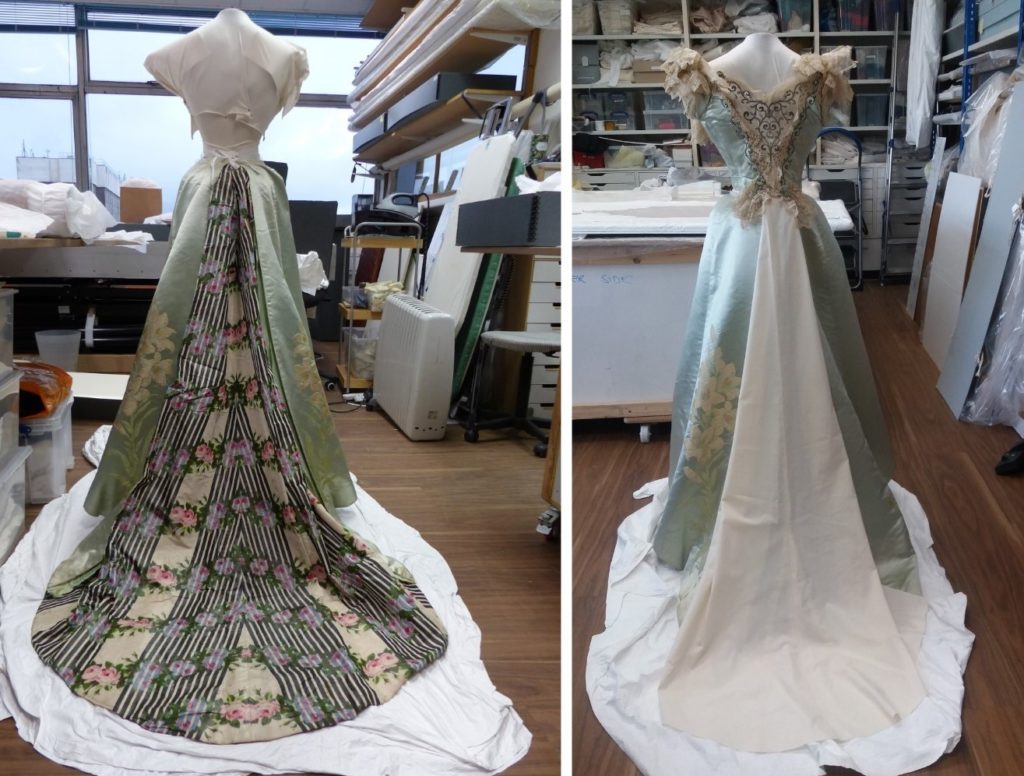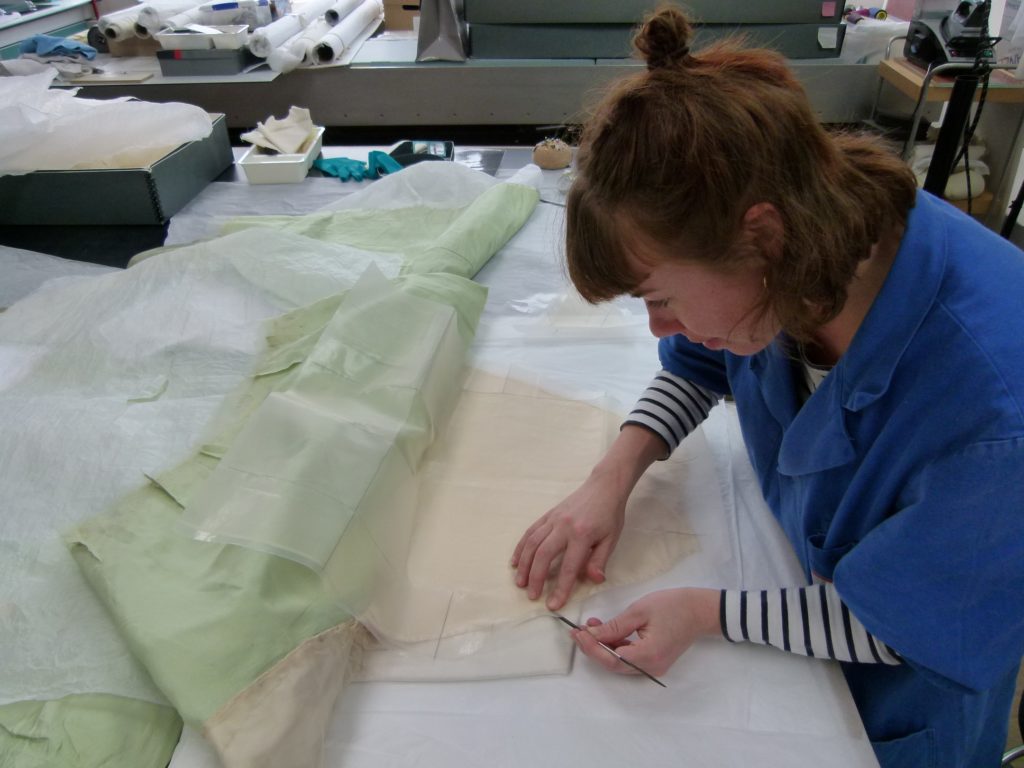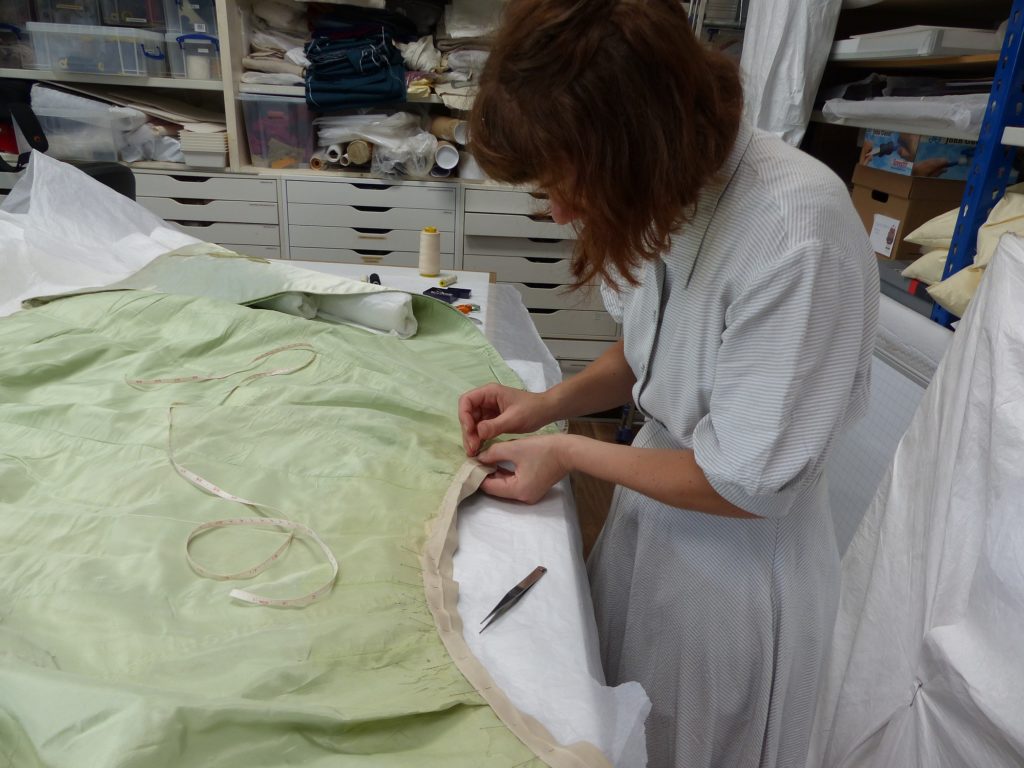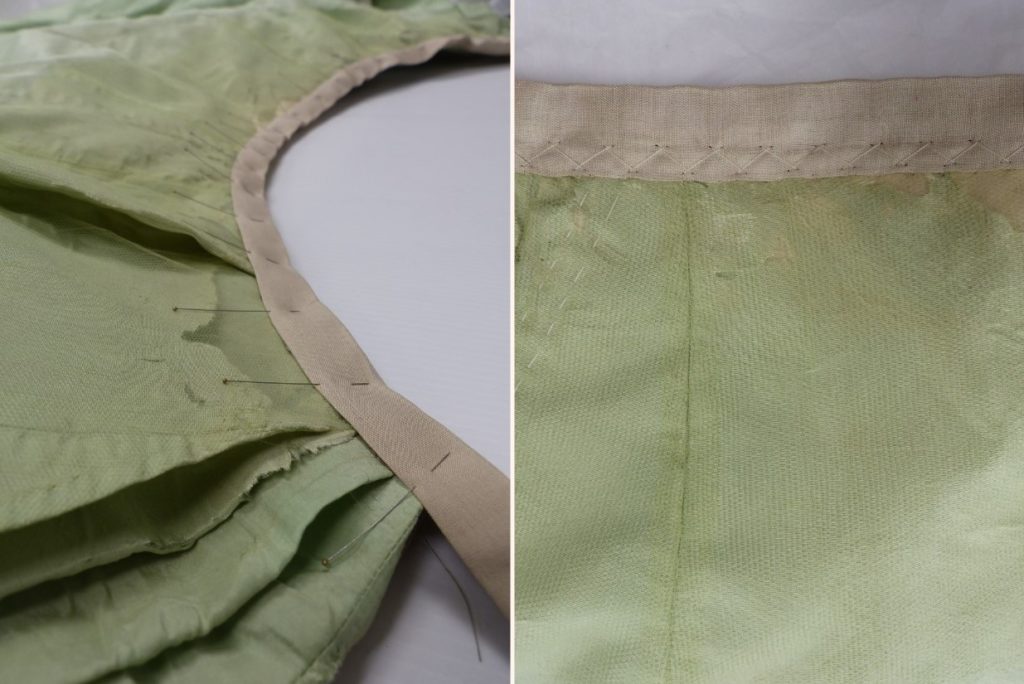
Charles Frederick Worth was the Lincolnshire designer who dominated the Paris fashion scene in the latter part of the nineteenth century, otherwise known as the ‘father of haute couture’. [1] It is a rare treat to have such sartorial history pass through your hands and so I was delighted to have the opportunity to work on this stunning evening bodice and skirt designed by the House of Worth, from the collection of Chertsey Museum. Both skirt and bodice have undergone intensive, interventive treatment at the Zenzie Tinker Conservation studio to ensure that they are robust enough to withstand display. They will then be shown in the exhibition ‘Dressed for Best’ opening at the museum on 22nd September 2018.
The outfit comes with a rich provenance, purchased by The Honourable Philadelphia Mary Lucy Robertson in 1897 the numerous minor alterations tell the story of a garment which has been well loved, tweaked and adapted to accommodate a changing figure (seams have been let out, darts moved and so forth). Indeed, this prized ensemble was the dress that Baroness Robertson chose to attend court in 1902 for the coronation of Edward VII so we know that it had a long and illustrious first life before passing into slightly less reverend hands.
In addition to damage caused through wear, the skirt was missing a number of panels to the reverse which would have made up the train. Research into similar garments was carried out to assist in designing an authentic-looking replica train. The closest example found in date, style, weave and embellishment is in the Metropolitan Museum of Art collection and can be seen here on their online archive. As luck would have it we currently hold a Worth gown in the studio of a similar date from the Southside House Pennington Mellor collection. When laid over one another in the studio the skirt panels matched almost exactly and the second Worth could be used to take a toile for the missing panels.

The treatment has involved a number of complex stages. The dyeing phase alone was extensive, mint and apple shades not being part of our usual conservation colour palette and colours had to be worked practically from scratch. The silk crepeline front panel to the skirt was almost entirely shredded and beyond conservation (its support would have severely compromised the overall aesthetic of the dress). My colleague Ania Golebiowska made a replica panel, stitching the pleats into undyed silk crepeline before dyeing – the heat of which had the added advantage of setting the pleats to match the original.
The waistband was in a particularly poor state with the skirt lining almost completely splitting free, held up by just a few near failing stitches. Damaged silk skirt panels were applied onto a support of silk crepeline using a combination of conservation grade adhesive and stitching before the garment could be reconstructed with a more sturdy replacement waistband.
And this was all before attempting the replica train panels designed to hook in and over the original to provide visual infill by just hanging in situ without the need for additional stitching. The skirt and purpose padded mannequin were returned first to Chertsey in order for them to start making the underpinning. Conservation of the bodice continued.
Second blog on the bodice treatment to follow.
[1]. https://www.metmuseum.org/toah/hd/wrth/hd_wrth.htm








